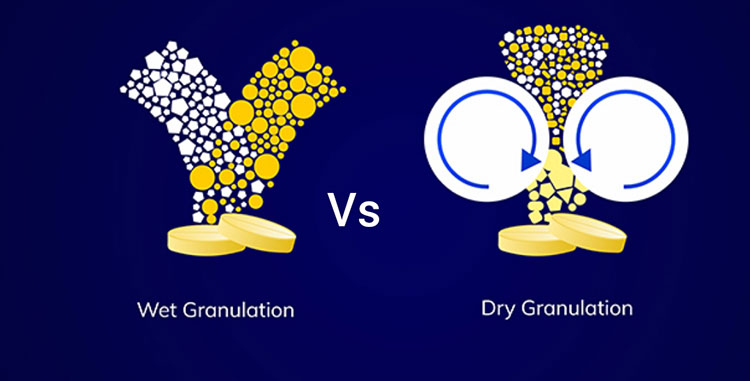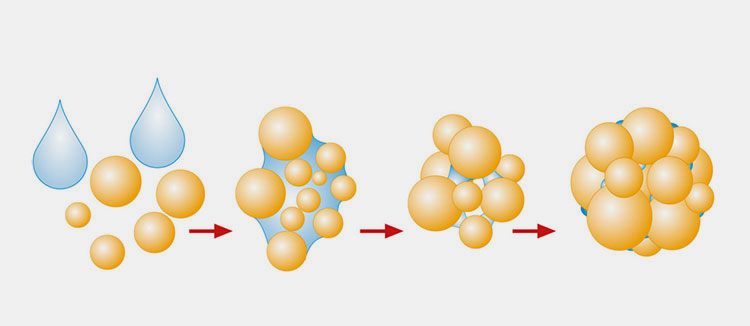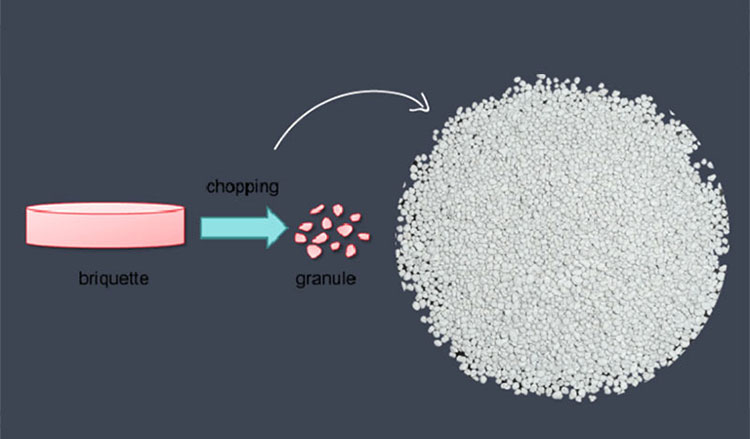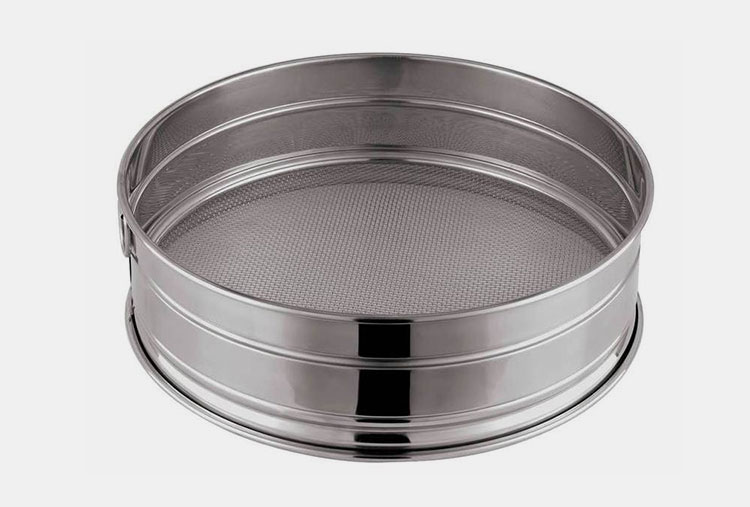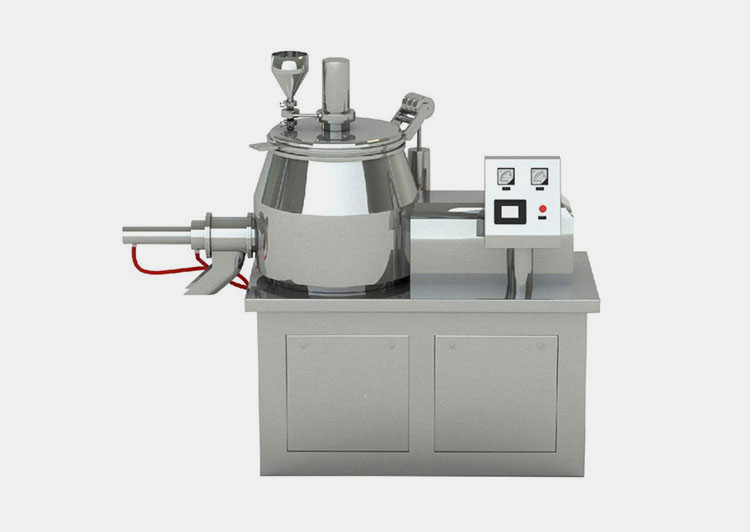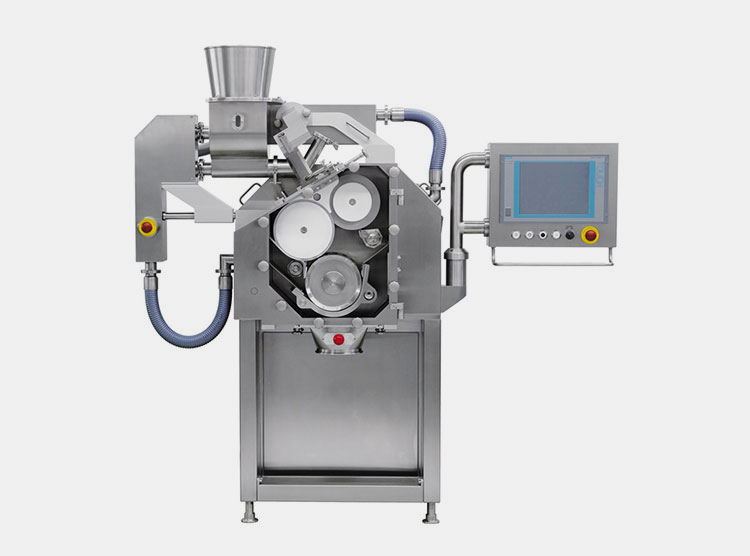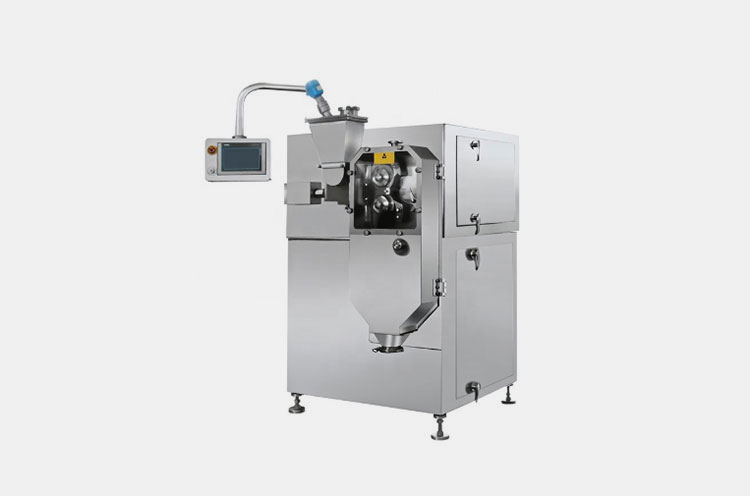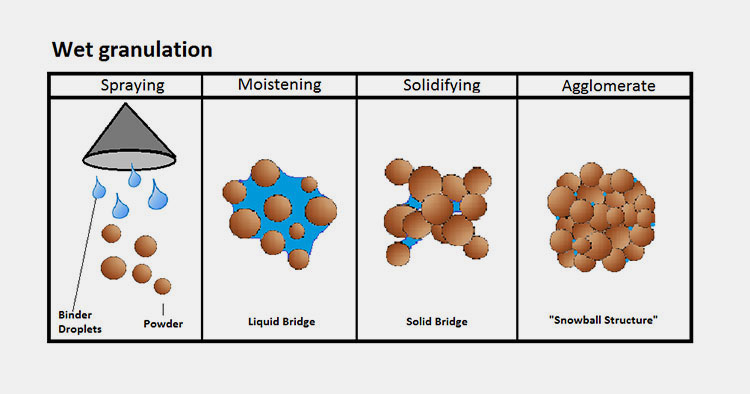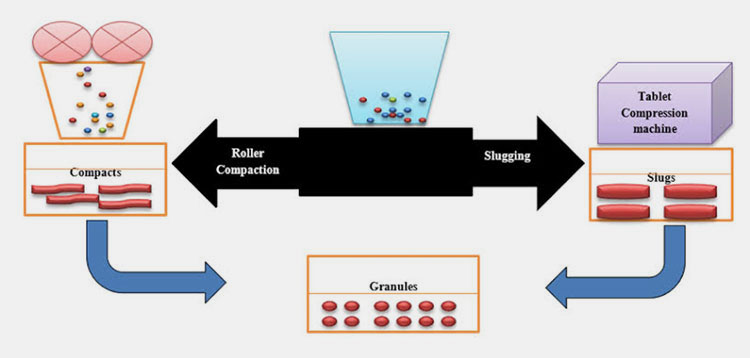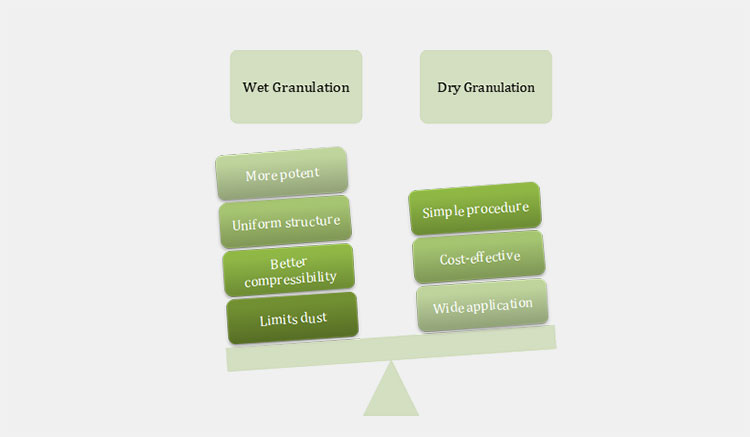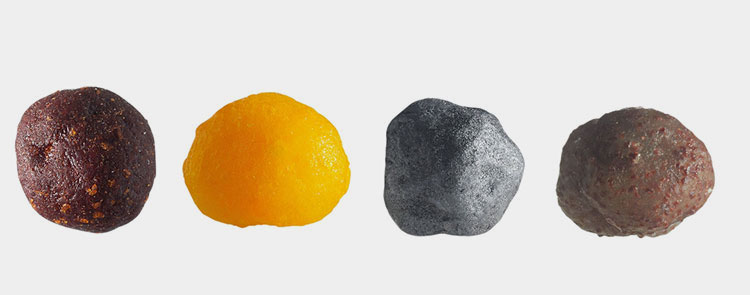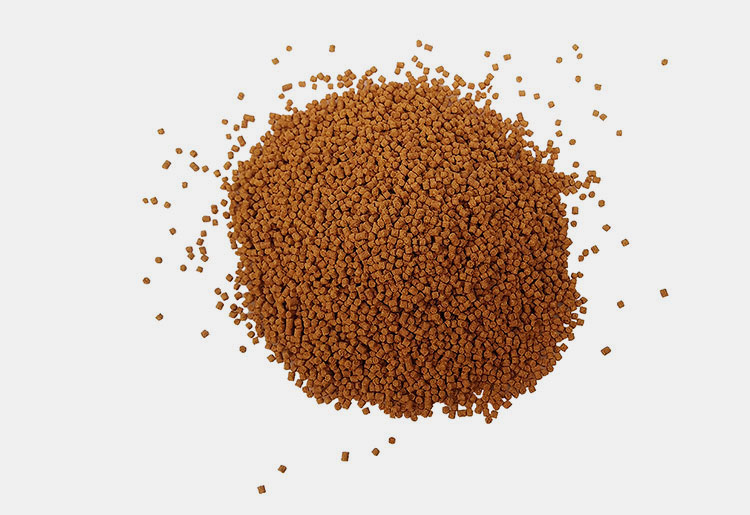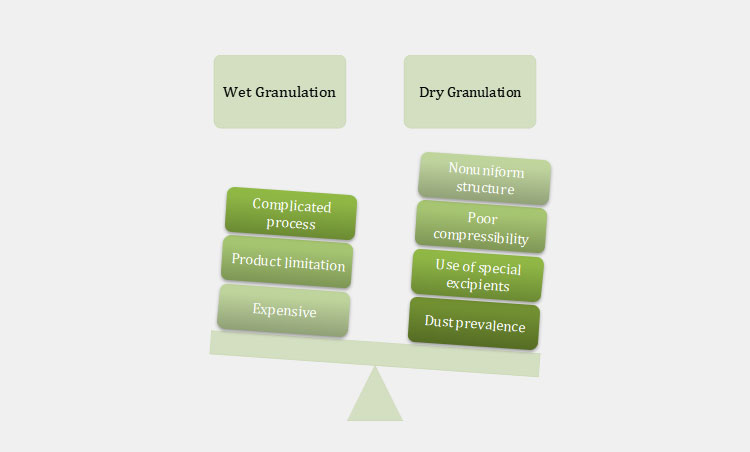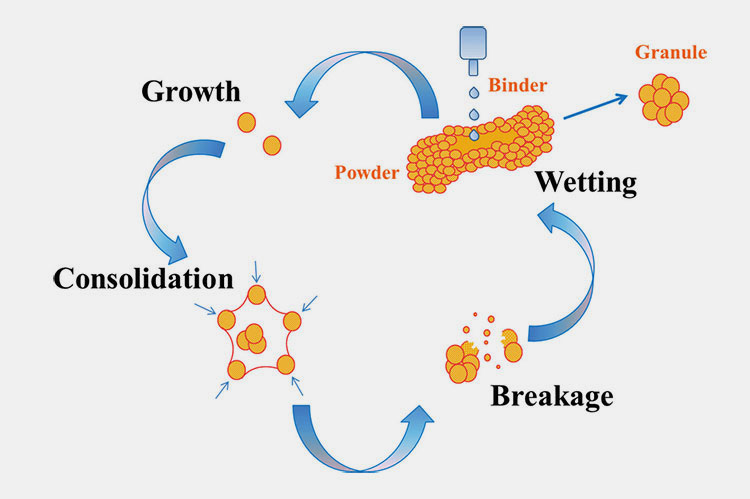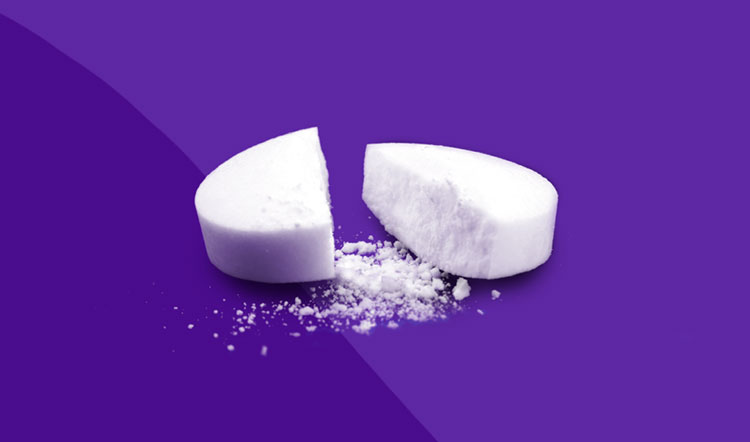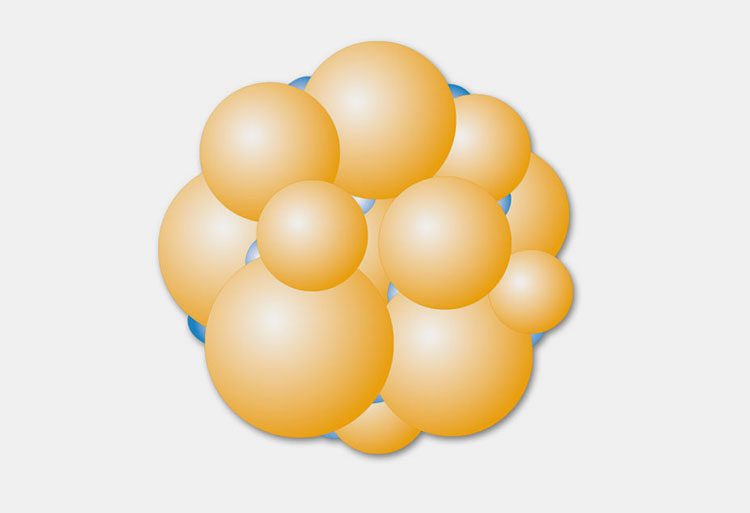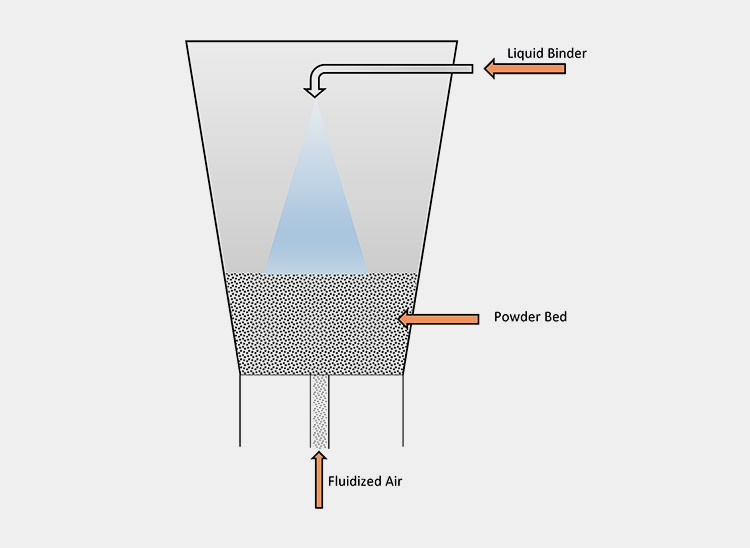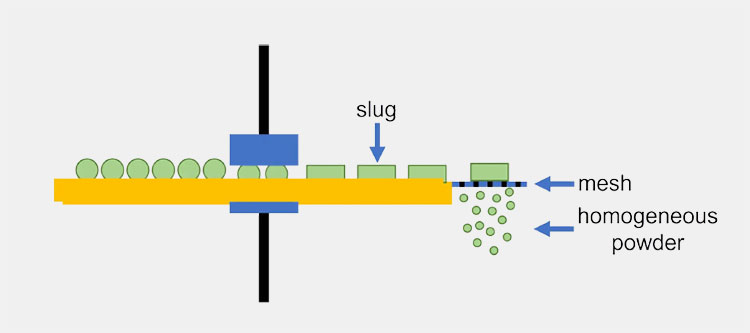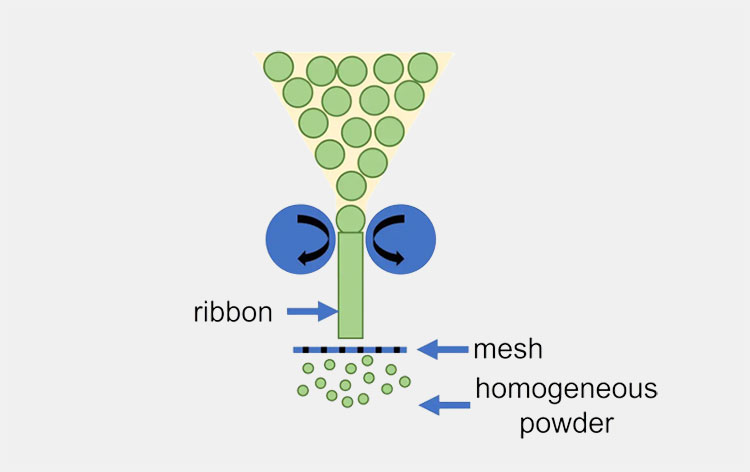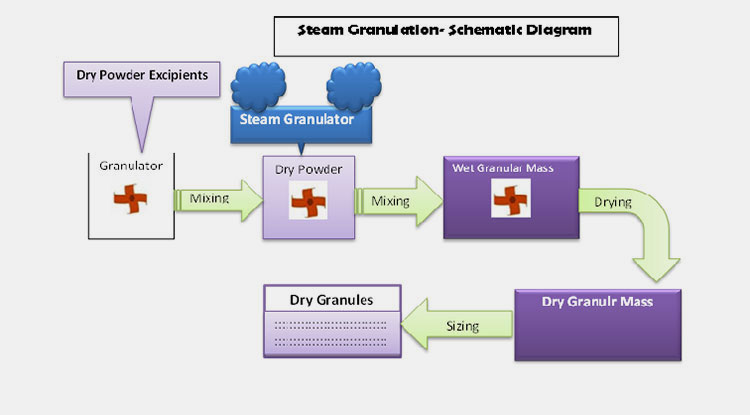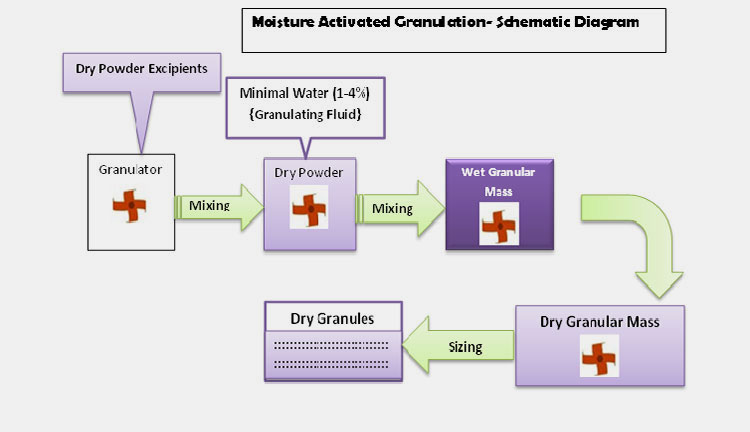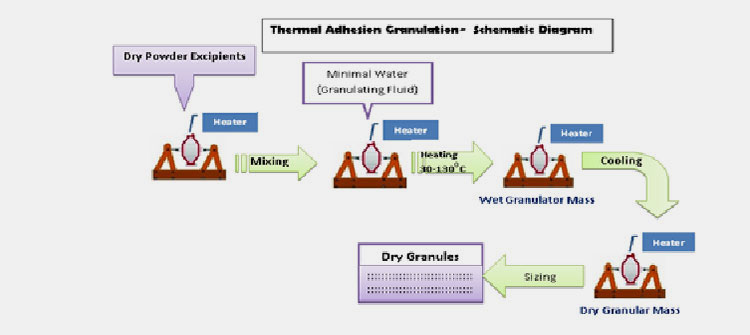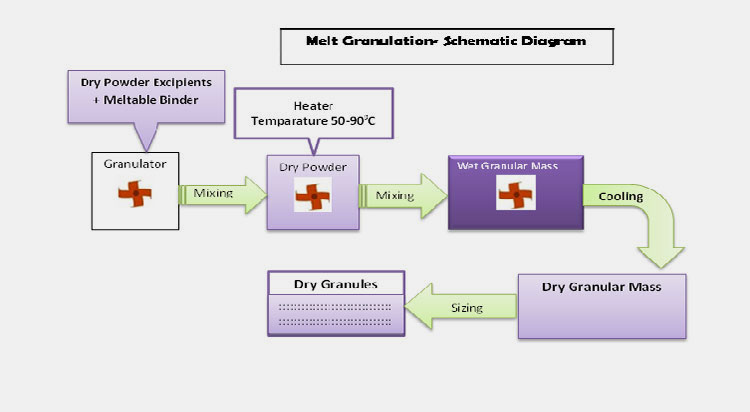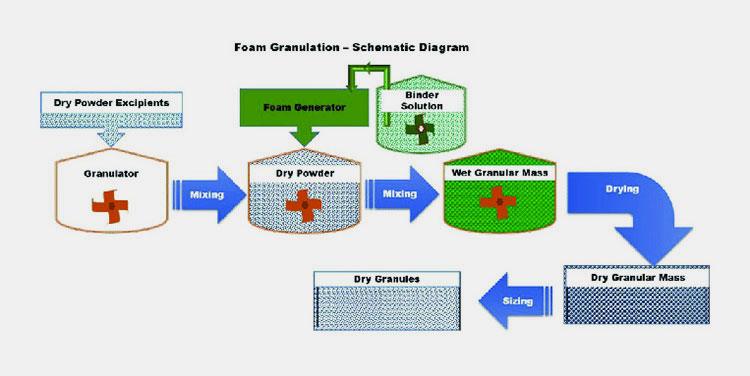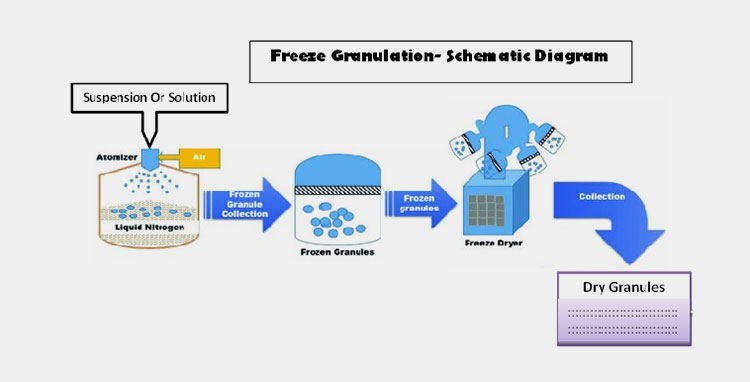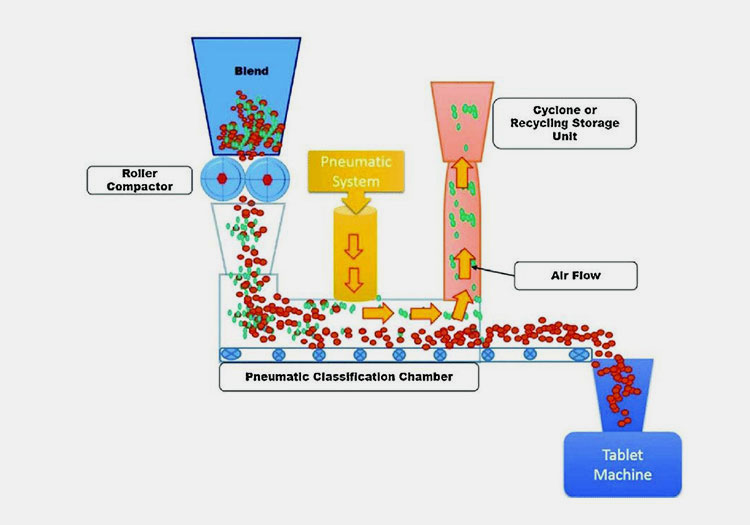Wet Granulation Vs Dry Granulation
Granulation is one of the important things being practiced in medical industry to make solid dosage form such as capsules, tablets, and pills. It paves the way for precise creation of granules by processing powders. That's why the industry in constantly engaged in trailblazing new methods and techniques to fulfill this inevitable step. In this way, two methods are globally recognized which are different from each other naming Wet Granulation Vs Dry Granulation.
You might be hearing it for the first time or may be familiar to these terminologies. However, most of the time medical practitioners and manufacturers get confused in them and start asking questions about their relation. So, this piece of writing has been designed to answer you that Wet Granulation Vs Dry Granulation are two totally different methods being employed for the creation of granules in many ways. So, let's delve deep into this review!
1.What Is Wet Granulation Vs Dry Granulation?
Wet Granulation
Wet granulation process- Picture Courtesy: foodfeedfinechemicals.glatt.com
Wet granulation is the most popular method used for the formulation of granules from powder which are commonly used for creating solid dosage form such as tablets, capsules, and other food products. It uses fluids for mixing with the powder to make an agglomeration of ingredients. The powder when mixed with binder form adhesion. Similarly, this wet mixture is processed by certain tools to produce granules of desired size.
The formed granules are further meant to be dried depending upon the needs of material. This method of wet granulation is suitable for powders which are strong and able to withstand heat as well as humidity. Although, it requires more time and energy to make granules, however, its finished granules are highly spherical and perfect.
Wet granulation can be achieved by using three components:
Powder:Powder is the first material required for wet granulation. Depending upon formulation needs, powder can be excipients, active ingredients, or mixture of both.
Fluids:Fuids are the prerequisites for wet granulation which involve the volatile and nontoxic liquids used as binding agents for amassing powders.
Sieve:Sieve is a metallic container with perforation through which the agglomerated mixture is processed and turned into homogeneous granules. It must be noted that different machines can be used instead of sieve which is employed for manual practice only.
Dry Granulation
Dry granulation- Picture Courtesy: senieer.com
Dry granulation is another notable method of granulation which is completed without using any liquid or heat. It simply involves the compaction of powders into slugs or strips which are then broken into small pieces called granules. That's why, it is considered the most convenient way for granulation as it uses compact rollers and tablet presses for granulation.
This technique is suitable for powders which are either temperature sensitive or moisture sensitive. Thus, you will find its use in both pharmaceutical as well as food sectors.
Dry granulation only requires two elements for the accomplishment of granulation including:
Powder:The use of powder is common to both in wet granulation and dry granulation as principal ingredient.
Granulating Device:It refers to the tools or machines needed for granulation. Now, it can be roller compactor for making flakes or standard tablet press for making slugs.
2.Wet Granulation Vs Dry Granulation? Equipment Required?
When applying wet granulation vs dry granulation into your production, you will require relevant equipment for it. Similarly, machines used for both of these machines vary from each other. So, let's have a look towards these machines separately!
Wet Granulation
Depending upon the way, manual or automatic, you adopt for wet granulation, you will require the following equipment.
Sieve
Test sieve- Picture Courtesy: walcoom.com
Sieve is one of the basic and important tools being used for carrying out manual wet granulation. It is a sort of container with flat layer of perforation. It can be simply used by putting the wet agglomeration of powder inside the sieve. Similarly, the constant rubbing of wet mixture result in their contact with perforation, consequently, it turns out of the sieve in form of granules.
Wet Granulation Machine
GHL Series High Speed Mixer/Granulator
Wet granulation machine is a sophisticated machine which is used to make granules by wet granulation. It is an automatic machine which is used on industrial level to deal with large volume of granules. The structure of machine is durable and composed of several components which vary from one type of machine to another.
However, the machine follows simple working procedure where powder is loaded into the working chamber. The attached agitator keeps the powder moving and fluid is constantly sprayed over the powder. Simultaneously, the chopper blade keeps cutting the wet mixture and precise granules are formed.
Wet granulation machine can be found in the following types:
- High shear granulator
- Low shear granulator
- Steam granulator
- Foam granulator
- Freeze granulator
Pharmaceutical Dryer
Allpack- FG Series Fluid Bed Dryer
Pharmaceutical dryer is an equipment which is tailored to dry the granules formed by the wet granulation method. They are useful in reducing the moisture content of granules to make them suitable for further processing.
Among many other types, fluid bed dryer is an important one which provides an enclosed environment for the drying of granules. It uses both hot and cold air for the simultaneous drying and cooling of granules. Hence, it provides you with finished product as per your demands.
Some of the other prominent types of pharmaceutical dryer include:
- Centrifuge Atomizing Pharmaceutical Dryer
- Mesh-belt Pharmaceutical Dryer
- Vibration Fluidized Bed Dryer
- Double Cone Rotary Vacuum Dryer
- Boiling Pharmaceutical Dryer
- Fluidized Bed Dryer
- Square And Round Static Vacuum Dryer
- Hot Air Circulating Pharmaceutical Dryer
Dry Granulation
In order to apply dry granulation method, you will need to use one of the two machines which are as follows:
Roller Compactor
Pharma roller compactor- Picture Courtesy: pharmaexcipients.com
Roller compactor is a type of machine used for dry granulation. It uses compaction method for the granulation of powders. The machine is composed of a stainless steel body with roller compactors as principal component where the actual process of dry granulation occurs.
It processes powders in a way that the powder is passed through roller compactor which result in the formation of a strip. The same compacted powder strip is then converted into granules by milling. As, the process lack inclusion of water as well as temperature, so, it is beneficial for all kinds of sensitive powders.
Slugger
Dry granulator machine- Picture Courtesy: yindamachinery.com
It is another machine used for dry granulation. Although, it is less frequently used than roller compactor, this machine can form slugs (large tablets) by mixing and then pressing powders. Therefore, it does not require any kind of fluid or temperature to carry out dry granulation.
The main structure of machine consists of feeding system, tablet pressing unit, granulation or crushing system, and dust collecting system. Thus, it carries out the process of dry granulation simultaneously.
3.Wet Granulation Vs Dry Granulation? Process?
The process of wet granulation and dry granulation entirely differs from one another. You will know their processes in the upcoming paragraphs:
Wet Granulation
The key steps involved in wet granulation are discussed below for your understanding:
Wet granulation process- Picture Courtesy: upload.wikimedia.org
Powder Loading
The process begins with loading the mixture of powder into wet granulation machine. As the powder is loaded, its wetting and nucleation process get started.
Liquid Spraying
Now, the liquid is sprayed over the mixture of powder which is in constant state of rotation by the agitator. This liquid spraying is the primary step for wetting your powder.
Granules Formation
As soon as the powder get sprayed with fluid, the tiny particles of powder start binding with each other. This process is referred to as coalescence where small particles come together to form a bigger one which is known as granule.
Breakage
As the granules formed by liquid spraying may vary in shape and size, a device naming chopper blade is located at the pot side which break down the granules to specific size. Hence, uniform wet granulation is achieved.
Dry Granulation
Dry granulation process entails few necessary steps including:
Dry granulation process- Picture Courtesy: eijppr.com
Mixture Preparation
Firstly, the active pharmaceutical ingredients and excipients are taken and appropriately weighed. They are then well mixed without adding any liquid. However, certain solid binders may be added to adjust the flow properties of powders.
Compaction
Once mixed, the powder will be compacted through force. Now, in dry granulation process two such compaction method may be used:
Slugging method:It adopts the technique of entering powder into the die cavity after which the powder is pressed between two flat metallic punches which form the slugs or large tablets.
Rolling method:It is the mainstream method of dry granulation which involves feeding the powder to the counter rotating pinch rollers. When supplied with powder, the rotation of roller compactor result in the formation of strips or flakes.
Granulating
It is the final phase where formed slugs or flakes are crushed by using pulverizing or milling technique to achieve the desired size of granules.
4.Wet Granulation Vs Dry Granulation? Pros And Cons?
Both wet granulation and dry granulation have their positive as well as negative sides. Therefore, it is necessary to know both of them for deciding the best method for you. In this way, the pros and cons of these granulation methods are enumerated below:
Pros
Wet Granulation
More Potent
Dry granulation uses conventional excipients instead of special ones. These too involves the additives for coloring and preservation of active ingredients. Thus, unlike dry granulation drugs produced through this method is more potent in effect.
Uniform Structure
Different types of dry granulation granules- Picture Courtesy: foodfeedfinechemicals.glatt.com
The granules produced through wet granulation are of uniform size with spherical shape. These granules when further processed for making tablets, are greatly helpful in creating precise and perfect shaped tablets.
Better Compressibility
Wet granulation support does not allow air entrapment during compression due to their high density. Moreover, this procedure offers better compressibility by reducing the need for extra force and time.
Support Post-Processing
Coated tablets with different colors- Picture Courtesy: pediaa.com
Post processing such as coating is often needed for tablets to mask their unpleasant taste and smell. In this way, wet granulation support coating due to its perfectly finished granules which remain unchanged even after contacting further liquids.
Limits Dust
Manufacturers of pharmaceutical industries need to reduce the prevalence of dust to the possible limit which is only possible with wet granulation. Thus, the removal of cross contamination and protection of employees involved is ensured.
Dry Granulation
Simple Procedure
Dry granulation follows extremely convenient procedure for making granules with no specific need for air cooling and hot air-drying system. Thus, the process is simple which can be carried out by layman after understanding the basic steps.
Cost-effective
This method is well-known for its cost-effectiveness with low capital investments and operating cost. In addition to it, dry granulation equipment often has low maintenance requirements as compared to wet granulation.
Wide Application
Food granules- Picture Courtesy: piscespros.com
Dry granulation skip the involvement of liquid and temperature which are the basic limitations for most of the moisture and heat sensitive powders like medicine powder, abrasive powder, and certain Good powders. Therefore, it can perfectly deal with such sterile materials without affecting their quality.
High Efficiency
By lacking multiple machines and long operational procedure, dry granulation offers continuous production process. Thus, the output ratio is increased, and high volume of production is achieved in less time.
Cons
Wet Granulation
Complicated Process
Cycle of wet granulation- Picture Courtesy: researchgate
The process of wet granulation is more complex and complicated especially without the use of right equipment. It follows a long procedure with preparing the wet mixture while taking control of the amount taken. Similarly, the formation of granules and their drying through separate machines consume both time and energy.
Product Limitation
Wet granulation is not suitable for powders with moisture sensitivity. Although, such powders are not plenty in pharmaceutical industry but there are numerous materials available in sectors like food and chemical. Together, it shows the application of wet granulation to the limited sphere.
Expensive
Wet granulation require more capital in form of multiple machines which are too expensive. These machines also need stable electric supply; therefore, companies must have renewable energy sources. Hence, this method of granulation is not reliable for small scale and startup business.
Dry Granulation
Nonuniform Structure
Tablets produced through dry granulation have high tendency of softening or breaking, especially during transportation as they are porous. They hardly have uniform shape or beautiful appearance due to less adhesion and uneven distribution of colors.
Poor Compressibility
Broken tablet
Dry granulation causes problem during compression such as air entrapment and it needs much force for compression.
Use of Special Excipients
Unlike wet granulation, dry granulation requires special excipients for binding as it cannot use the regular liquid ones. This is the reason why tablets produced through dry granulation have potential side effects.
Dust Prevalence
The absence of liquid binders in dry granulation often leads to excessive dust during operation. It is harmful especially when dealing with hazardous substances.
5.Wet Granulation Vs Dry Granulation? Properties Of Granules?
The granules produced by wet granulation and dry granulation can be easily distinguished from each other due to their structural, potency, and apparent properties. These are as follows:
Wet Granulation
Wet granulation end product granule- Picture Courtesy: foodfeedfinechemicals.glatt.com
Granules formed through wet granulation method are:
- More spherical in shape.
- They are roughly textured, therefore, often have poor flowability.
- These granules have low density due to which they cannot glide efficiently.
- These granules are better for any type of formulation.
- Such granulation forms a product that is difficult to disperse or segregate.
Dry Granulation
Dry granulation properties- Picture Courtesy: hmicronpowder.com
Dry granulation make granules which possess following properties:
- They have irregular shape.
- Granules produced by this way are denser and compact.
- These granules support instant flow.
- As granules produced through dry granulation are dry in nature, they are suitable for few types of formulation and do not support coating.
Such granules are dispersal and may lead to segregation of the components.
6.Which Is Widely Used? Wet Granulation Vs Dry Granulation?
Medical practitioner placing lid over wet granulation machine- Picture Courtesy: tabletpresses.com
When it comes to highlight the use of wet granulation and dry granulation, so, both have their relevance in respective domains due to the concerned benefits and drawbacks. However, wet granulation is widely preferred by pharmaceutical manufacturers due to its effectiveness, safety, and formulation of uniform granules.
Despite its complexity and long working procedure, wet granulation offers certain advantages which a concerned manufacturer can never overlook. It is good in using less binding agent, offering scalability, and maintain dust free environment to retain the integrity of tablets
In contrast, dry granulation is also popularly used by the owners of industries in food and chemical sector due to its simple working procedure. It is also favored for its usefulness for moisture sensitive materials as a result of which sterile powders are not exposed to intense heat and humidity.
7.Which Is Cost-effective? Wet Granulation Vs Dry Granulation?
Cost measuring icon- Picture Courtesy: choice.com.au
As we have explained above, wet granulation requires more equipment and its operation is based on certain steps which also take time. Similarly, the new advancements in the field have introduced new types of machines to deal with wet granulation in different ways. However, all this account for the expensive nature of wet granulation despite its popularity among industrialists.
On the other hand, dry granulation can be simply called a cost-effective and cheaper way to turn your powders into granules. It is because this method has limited and easy steps which do not require multiple cycles to done with granulation. Moreover, the use of a single machine also emphasizes the other associated aspects such as low consumption of energy, resources, and time.
8.Methods Used In Wet Granulation Vs Dry Granulation?
There are numerous methods which are used in wet granulation and dry granulation. These can be better understood under traditional methods and advanced methods.
Traditional Methods
Wet Granulation
Low Shear Granulation
Low shear granulation is one of the conventional and important methods being used for wet granulation. It involves the wetting of powder with fluid which is then processed by using low shear granulation mechanism. With low speed, low shear granulation is less costly and require less amount of binders. Therefore, it is good for pharmaceutical, food and fertilizer industries.
High Shear Granulation
It is another significant method of wet granulation which uses equipment having high shear mechanism in form of double blades, a rotary agitator and side chopper. Therefore, it is efficient in performance and is capable to produce uniform granules without generating dust. It is suitable for pharmaceutical, detergent, and and agrochemical industry.
Fluidized Bed Granulation
Fluidized Bed granulation process- Picture Courtesy: mdpi.com
It refers to a more comprehensive method where powder mixing, granulating, and drying is done simultaneously. The agglomeration is formed by spraying fluid after which granules are formed. The same granules are then dried by using hot air. This method is fully automatic with performing every step in a single machine.
Dry Granulation
Slugging
Slugging method- Picture Courtesy: ipharmachine.com
Slugging is seldom used method for dry granulation. It involves the preparation of dry powder formulation by mixing excipients along with active ingredients. It is also known as precompression or double compression in which the prepared mixture is compacted in form of slugs by using standard slugger tablet press. Similarly, these formed slugs are crushed into small granules for further processing.
Compaction
Compaction dry granulation method- Picture Courtesy: ipharmachine.com
It is the most widely used method for dry granulation. This method follows a simple procedure where no need of liquids is realized for wetting. Instead, a roller compactor is employed to make flakes or strips of powder through their pressing between punches. These formed strips are then broken down into desired size of granules.
Advanced Methods
Wet Granulation
Recently, many advancements have been made in the the wet granulation methods to facilitate its convenient application. So, let's enumerate these advanced methods one by one:
Steam Granulation
Steam granulation- Picture Courtesy: semanticscholar.org
Steam granulation is one of the advanced methods introduced in wet granulation. Unlike conventional method, it uses a technique of water steam to form granules. It does not need liquid as a binding agent instead this is done by the help of steam. In this way, the granules made by steam granulation are spherical and easily diffusible. However, it is not desirable for thermolabile drugs and powders.
Moisture Activated Dry Granulation
Moisture activated granulation- Picture Courtesy: semanticscholar.org
It refers to the advanced method where wet granulation is based on two steps. Firstly, by adding liquid binders to powder, agglomeration is formed. Afterwards, the same mixture is dried by adding silicon dioxide or microcrystalline cellulose to absorb excess moisture. In this way, the possibility of lumps become zero, but this method is technique is not good for hygroscopic drugs.
Thermal Adhesion Granulation
Thermal Adhesion Granulation- Picture Courtesy: semanticscholar.org
This is another advanced technique which uses both binder and solvent along with heat. The wet mixture is processed by the machine in a way that heat is used for the adhesion and dry of granules. Thus, no additional drying is required, and the finished granules have more tensile strength. However, the method has limitations of choosing among specific binders and it needs it needs specific equipment for heat generation.
Melt Granulation
Melt granulation- Picture Courtesy: semanticscholar.org
Melt granulation involves the usage of binders with low melting temperature. During process, active ingredients, excipients, and binders are collectively loaded. The binder may be in solid form or melted liquid which is why this method is sometimes called thermoplastic granulation. This mixture is then heated according to the temperature of binder which ultimately result in the creation of uniform granules without using excessive water and heat.
Foam Granulation
Foam granulation- Picture Courtesy: researchgate.net
This inventive method is unique in its way. It simply turns the binder into foam and introduce the binder to powders in form of foam. Resultantly, the granules created are containing more nuclei and the particulates are uniformly distributed. That's why, this method is admired for its effectiveness for all kinds of drugs despite its expensive operation.
Freeze Granulation
Freeze granulation- Picture Courtesy: semanticscholar.org
Freeze granulation is one is the innovative methods used in wet granulation. It is undertaken in a way where powder suspension is poured into liquid nitrogen and the drops are frozen into granules. These granules are then dried by using freeze drying method during which ice is sublimated and only homogeneous granules are left. It is good for controlled granules density.
Reverse Wet Granulation
Reverse wet granulation is the recent advancement in wet granulation technique which follows two phases. First, the active powder ingredients are mixed with liquid binder in a granulator to form granules. Second, the formed granules are subjected to be mixed with powder excipients for final granulation in granulator. Hence, these granules are then dried and milled for sizing.
Dry Granulation
Pneumatic Dry Granulation
Pneumatic dry granulation- Picture Courtesy: researchgate.net
It is the only advanced technique being introduced in dry granulation. This method is effective to maintain the tablet hardness, flowability, and compression abilities. For this reason, the roller compactor or tablet press has an attached air classification system which separate the undesirable size of granules from the right-sized granules.
Similarly, the smaller granules are sent back for compaction and precise granules are processed for making end product. Hence, you can easily reduce the common errors associated with dry granulation by employing this technique.
Conclusion
The bottom line is that Wet Granulation Vs Dry Granulation are two distinct methods of granulation. Both these techniques vary from one another in numerous aspects as discussed above. Wet granulation is gaining more importance due to the advancements made in it. While as, dry granulation is still preferred by the companies in different fields. Besides, you may have established your own analysis after reading this blogpost. So, if you have any query or you want to adopt one of these two methods for your manufacturing and looking forward for relevant machines then you can simply approach us through our website.
Don't forget to share this post!
CONTACT US
Tell us your raw material and project budget to get quotations within 24 hours.
WhatsApp Us: +86 181 7101 8586
The Buyer's Guide


